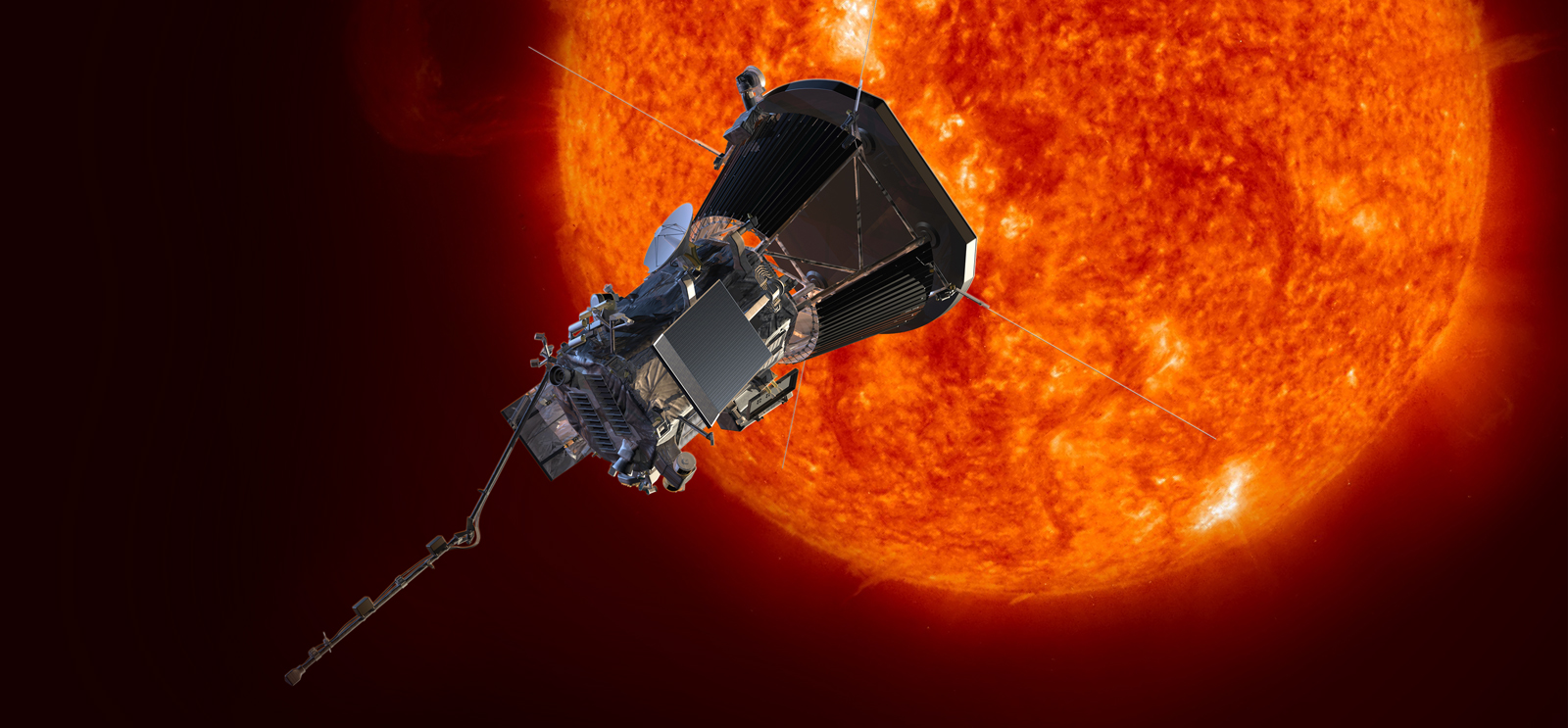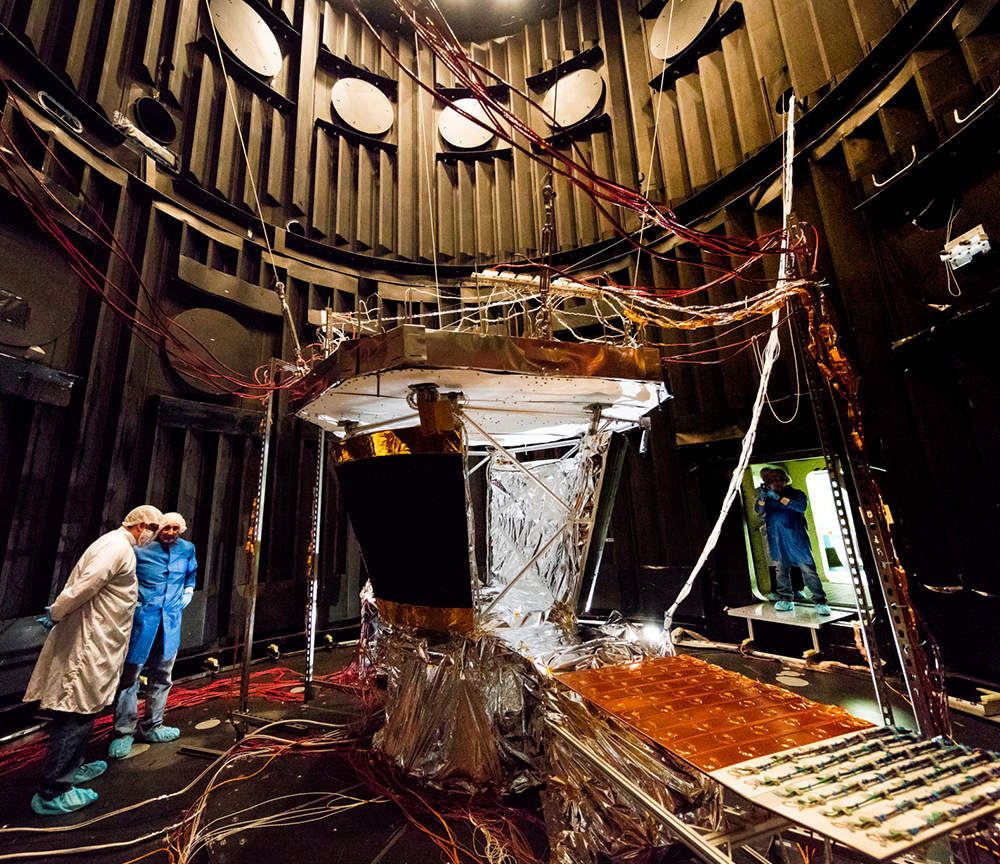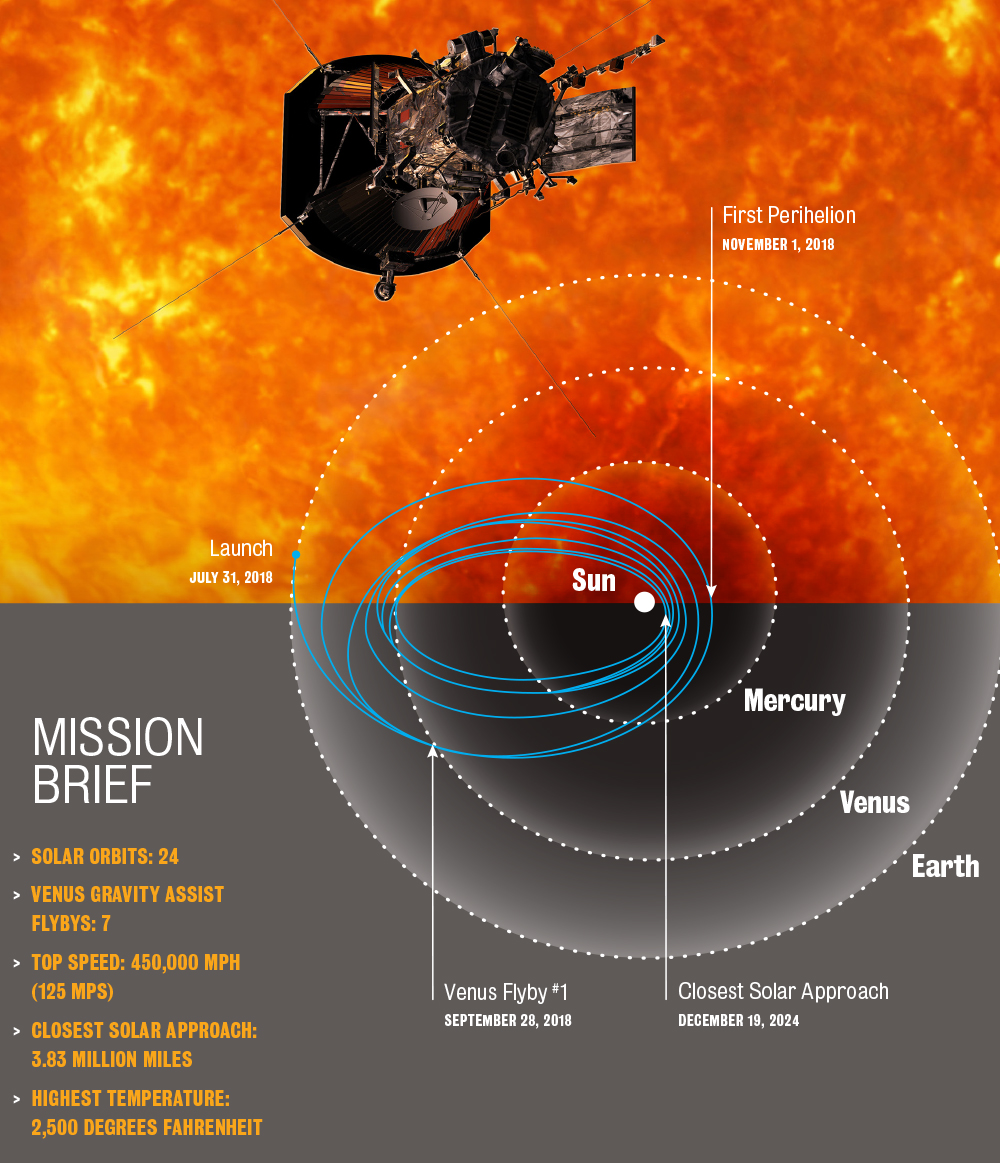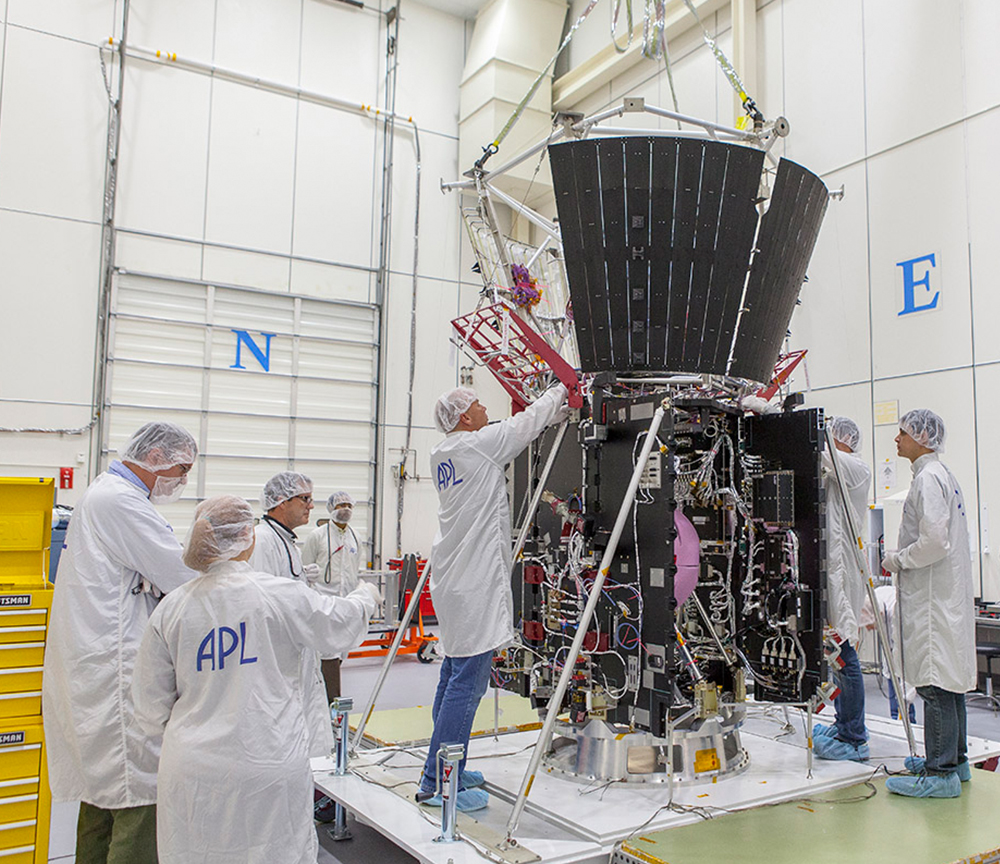
(Illustration courtesy Johns Hopkins University Applied Physics Lab)
NASA’s Parker Solar Probe gets ready to meet a star.
By the end of its seven-year mission, a 10-foot probe about the weight of a Clydesdale horse will travel nearly eight times closer to the sun than any spacecraft before.
Here comes the Parker Solar Probe, and it’s more than all right. “I like to call it the coolest hottest mission under the sun,” NASA project scientist Nicola Fox said at a May gathering on the UChicago campus.
The event marked the rechristening of the spacecraft (previously called Solar Probe Plus) in honor of Eugene Parker, the University’s S. Chandrasekhar Distinguished Service Professor Emeritus in Physics. It’s the first time NASA has named a spacecraft for a living person.

Parker is best known for his pioneering work on solar wind, whose existence he predicted in 1958. When the theory was confirmed, it changed how scientists conceive of the sun and the space between planets and stars—not a vacuum, as once thought, but a tussle of radiation and magnetic fields. Thanks to Parker’s work, “nature has become more beautiful, more complex,” Thomas Zurbuchen, the head of NASA’s science mission directorate, said at the event.
With the Parker Solar Probe, researchers hope to solve other puzzles about Earth’s sun. For instance, why is the sun’s outer atmosphere, or corona, so much hotter than the star’s surface? “It’s like water flowing uphill. … It shouldn’t happen,” Fox said. Data from the Parker Solar Probe will also be used to study the physics of stars and improve forecasting of major space weather events.
During its long ride, the probe will orbit the sun 24 times, tightening the circle as it goes—with a little help from Venus’s gravity. The Parker Solar Probe will launch in late July of 2018 and reach its first perihelion (the point in an object’s orbit when it is closest to the sun) three months later.
Parker, now 90, called the effort “a heroic scientific space mission. By ‘heroic,’ of course I am referring to the temperature”—a blistering 2,500 degrees Fahrenheit. The probe’s only protection is a carbon-composite shield just 4.5 inches thick.
“As a theoretician,” Parker added, “I greatly admire the scientists and engineers whose patient efforts together converted the solar probe concept into a functioning reality, ready to do battle with the solar elements as it divulges the secrets of the expanding corona.”
“So,” he concluded, sounding pleased, “hooray for solar probe.”
You’ve probably watched tendrils of steam rise from a hot cup of tea. As it ascends, the steam gradually cools and slows down. Now imagine if that steam got even hotter and sped up as it left your mug. This, in essence, is how solar wind behaves.
Solar wind is a scorching, high-speed torrent of electrically charged gas that cascades out from the sun’s corona. For reasons scientists don’t understand fully, but hope to study with the Parker Solar Probe, the corona—the faint, glowing outline of the sun that is visible during a solar eclipse—is even hotter than the sun’s surface. The corona can reach temperatures of 3.5 million degrees Fahrenheit; by comparison, the solar surface is practically frigid at just 10,000 degrees Fahrenheit. Particles in the uppermost reaches of the corona are so hot and move so fast that the sun’s gravity can’t hold them anymore. The corona continually sheds these particles in the form of solar wind.

Solar wind varies in speed—sometimes it’s more like a breeze, and other times more like a gale—and can take two to four days to travel to Earth. When fast solar wind strikes Earth’s magnetic field, the interaction can enhance the intensity of auroras, the brightly colored light displays sometimes visible in the skies of the Arctic and Antarctic regions, or disrupt satellite functioning and cause power outages.
As it moves away from the sun, solar wind expands to fill the large volume of space in our solar system, gradually losing density and pressure in the process. At distances of 84 astronomical units—more than twice the distance from the Sun to Pluto—its progress is finally stopped by the interstellar medium, the gassy, dusty material that sits between stars.
In 1958, shortly after he submitted a paper to the Astrophysical Journal, Parker got a memorable scolding from the referees assigned to vet the research before publication. “This is ridiculous,” one of the anonymous reviewers told him. “Before you write a scientific paper you should at least take the trouble of going to the library and reading up on the subject.”

Parker was neither surprised by the reaction (“any paper with a really new and interesting idea is going to run into trouble,” he says) nor deterred. The reviewer was infuriated but hadn’t identified anything incorrect in the paper, which predicted what Parker would later dub “solar wind”—a stream of plasma hurtling away from the sun at speeds of a million miles an hour.
As early as the 1940s, scientists in Germany and Sweden suggested material was escaping the solar corona and moving into space; in 1951, astronomer Ludwig Biermann noticed that comet tails always point away from the sun and proposed this was due to some kind of continuous coronal radiation.
Parker unlocked the specifics: the outer part of the sun’s corona, he argued, doesn’t behave like Earth’s atmosphere, which gets colder farther away from the planet’s surface. Instead, the outer layers of the corona become so hot that they surge out into space as solar wind, or “solar corpuscular radiation” as it was first (and less catchily) called. The math—four lines of algebra—checked out. “As far as I was concerned, it was open and shut,” he says.

Nearly everyone disagreed. How, critics wondered, could the sun continue to exist as we know it if its corona was continuously flying away? Even Parker’s UChicago colleague Subrahmanyan Chandrasekhar, then editor of the Astrophysical Journal, was initially skeptical about the idea. But despite his own reservations he couldn’t see any obvious errors in Parker’s work and decided to publish the paper—overruling the reviewers who had judged it so harshly.
Experts, including Joseph Chamberlain of Rice University, developed competing theories. It took a series of US and Soviet missions in the late 1950s and early 1960s for Parker’s work to be fully vindicated. The Soviet satellite Lunik 2 captured hints of solar wind in 1959, and three years later, NASA’s Mariner 2 confirmed the conjecture using an instrument codesigned by Marcia Neugebauer of NASA’s Jet Propulsion Laboratory. Right away, the probe detected a flow of solar radiation at velocities and densities that matched Parker’s prediction. “Parker had certainly been right on,” Neugebauer recalled later. “Finally,” Parker says, “there was no way out of accepting it.”
Since Mariner 2, scientists have measured the acceleration of solar wind and discovered the source of the fastest gales. In 2015 NASA’s Mars Atmosphere and Volatile Evolution (MAVEN) mission revealed that solar wind stripped away gasses from Mars’s atmosphere, transforming the once warm and wet planet into a much colder and dryer one. But deep mysteries about solar wind remain—mysteries that the Parker Solar Probe may help solve. For instance, the mechanisms that heat the corona and accelerate solar wind aren’t well understood. “It’s very exciting that we’ll finally get a look,” Parker said in an interview with NASA. “I’m sure that there will be some surprises. There always are.”
